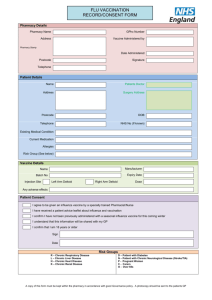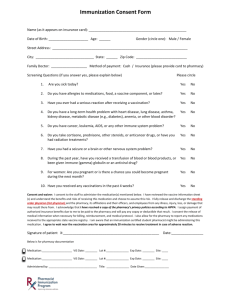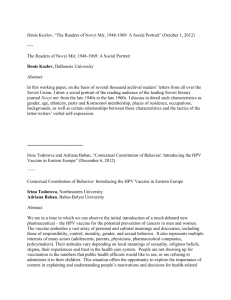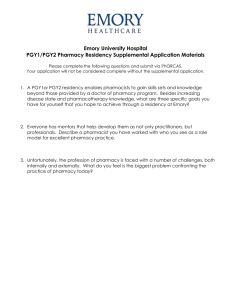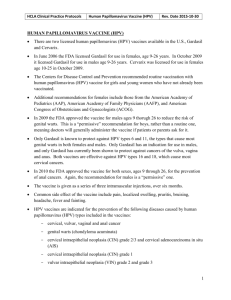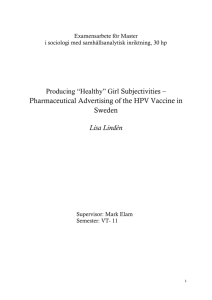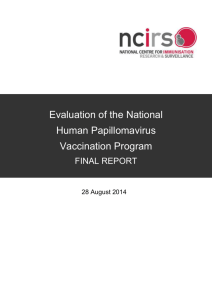Adolescent Vaccination Study – UNC, Brewer
advertisement
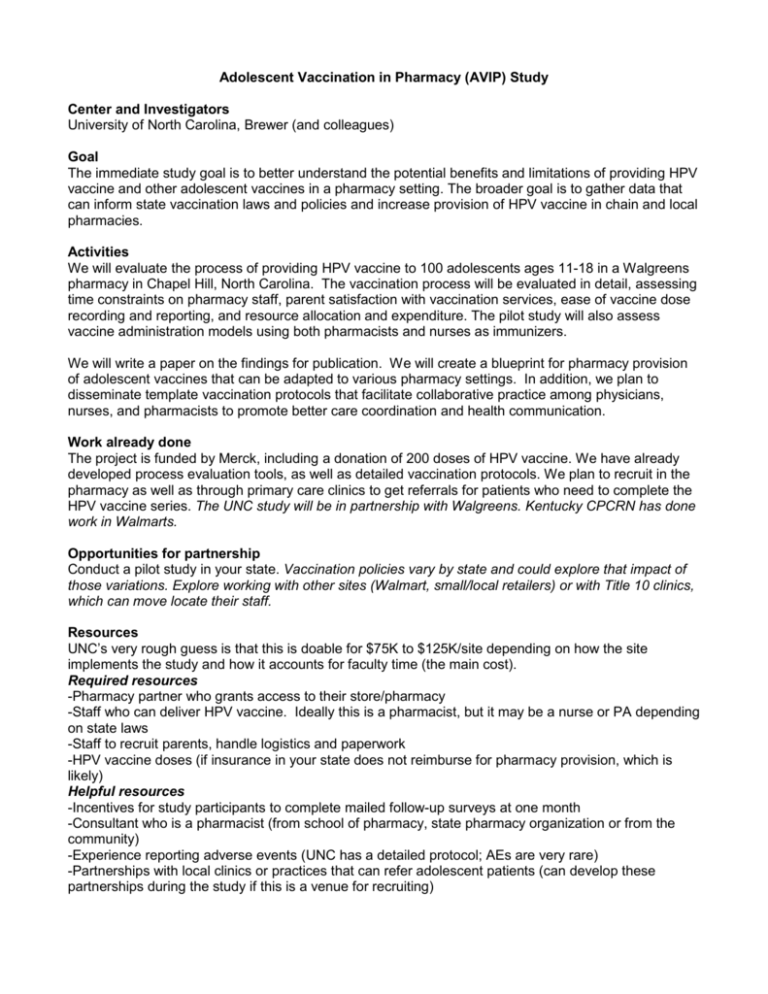
Adolescent Vaccination in Pharmacy (AVIP) Study Center and Investigators University of North Carolina, Brewer (and colleagues) Goal The immediate study goal is to better understand the potential benefits and limitations of providing HPV vaccine and other adolescent vaccines in a pharmacy setting. The broader goal is to gather data that can inform state vaccination laws and policies and increase provision of HPV vaccine in chain and local pharmacies. Activities We will evaluate the process of providing HPV vaccine to 100 adolescents ages 11-18 in a Walgreens pharmacy in Chapel Hill, North Carolina. The vaccination process will be evaluated in detail, assessing time constraints on pharmacy staff, parent satisfaction with vaccination services, ease of vaccine dose recording and reporting, and resource allocation and expenditure. The pilot study will also assess vaccine administration models using both pharmacists and nurses as immunizers. We will write a paper on the findings for publication. We will create a blueprint for pharmacy provision of adolescent vaccines that can be adapted to various pharmacy settings. In addition, we plan to disseminate template vaccination protocols that facilitate collaborative practice among physicians, nurses, and pharmacists to promote better care coordination and health communication. Work already done The project is funded by Merck, including a donation of 200 doses of HPV vaccine. We have already developed process evaluation tools, as well as detailed vaccination protocols. We plan to recruit in the pharmacy as well as through primary care clinics to get referrals for patients who need to complete the HPV vaccine series. The UNC study will be in partnership with Walgreens. Kentucky CPCRN has done work in Walmarts. Opportunities for partnership Conduct a pilot study in your state. Vaccination policies vary by state and could explore that impact of those variations. Explore working with other sites (Walmart, small/local retailers) or with Title 10 clinics, which can move locate their staff. Resources UNC’s very rough guess is that this is doable for $75K to $125K/site depending on how the site implements the study and how it accounts for faculty time (the main cost). Required resources -Pharmacy partner who grants access to their store/pharmacy -Staff who can deliver HPV vaccine. Ideally this is a pharmacist, but it may be a nurse or PA depending on state laws -Staff to recruit parents, handle logistics and paperwork -HPV vaccine doses (if insurance in your state does not reimburse for pharmacy provision, which is likely) Helpful resources -Incentives for study participants to complete mailed follow-up surveys at one month -Consultant who is a pharmacist (from school of pharmacy, state pharmacy organization or from the community) -Experience reporting adverse events (UNC has a detailed protocol; AEs are very rare) -Partnerships with local clinics or practices that can refer adolescent patients (can develop these partnerships during the study if this is a venue for recruiting)

